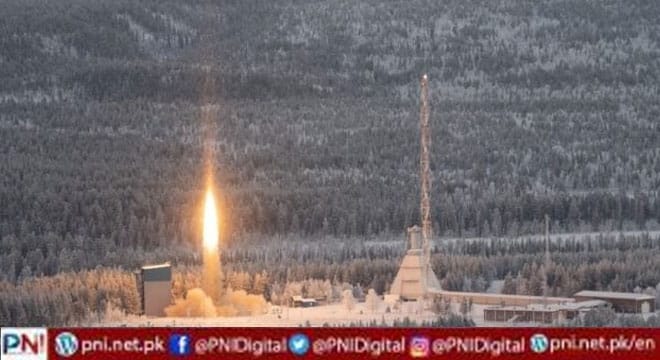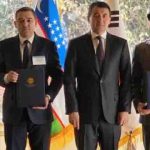ESRANGE SPACE CENTRE, Sweden, Jan 13 (AFP/APP): As the mercury drops to minus 20 Celsius, a research rocket lifts off from one of the world’s northernmost space centres, its burner aglow in the twilight of Sweden’s snowy Arctic forests.
Hopes are high that a rocket like this could carry a satellite this year, in what could be the first satellite launch from a spaceport in continental Europe.
At the launch pad, about an hour from the mining town of Kiruna, there’s not a person in sight, only the occasional reindeer herd in the summer.
The vast deserted forests are the reason the Swedish space centre is located here, at the foot of “Radar Hill”, some 200 kilometres (124 miles) above the Arctic Circle.
“In this area we have 5,200 square kilometres (2,007 square miles) where no one lives, so we can easily launch a rocket that flies into this area and falls down without anyone getting harmed,” Mattias Abrahamsson, head of business development at the Swedish Space Corporation (SSC), tells AFP.
Founded by the European Space Agency (ESA) in 1966 to study the atmosphere and Northern Lights phenomenon, the Esrange space centre has invested heavily in its facilities to be able to send satellites into space.
Sweden’s King Carl XVI Gustaf and European Commission President Ursula von der Leyen are due to inaugurate the site’s three new launch pads on Friday.
At a huge new hangar big enough to house two 30-metre rockets currently under assembly elsewhere, Philip Pahlsson, head of the “New Esrange” project, pulls up a heavy blue door.
Under the rosy twilight of this early afternoon, the new launch pads can be seen in the distance.
“Satellite launches will start to take place from here next year,” Pahlsson says.
“This has been a major development, the biggest step we have taken since the inception of Esrange.”
More than 600 suborbital rockets have already been launched from this remote corner of Sweden’s far north, including the Suborbital Express 3 whose late November launch AFP witnessed as the temperature stood at -20 degrees Celsius (-4 degrees Fahrenheit.)
While these rockets are capable of reaching space at altitudes of 260 kilometres, they’re not able to orbit Earth.
Follow the PNI Facebook page for the latest news and updates.








